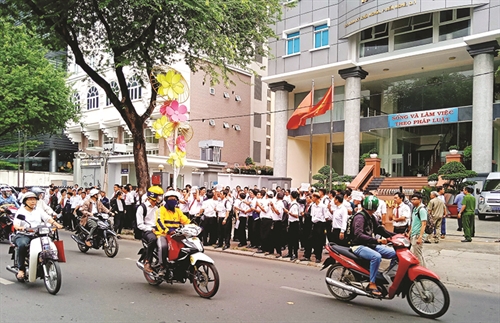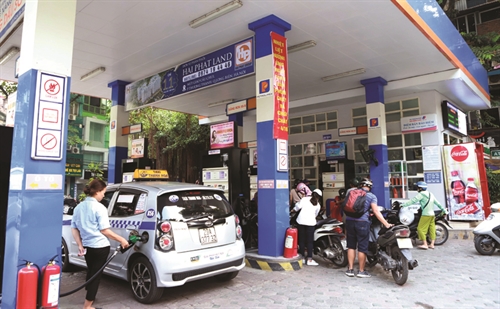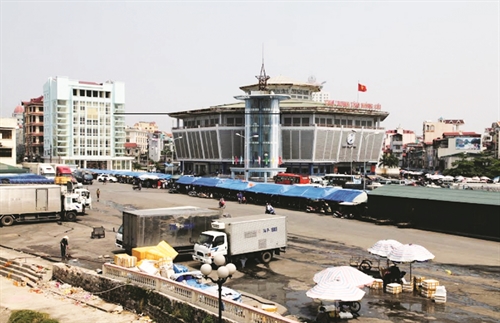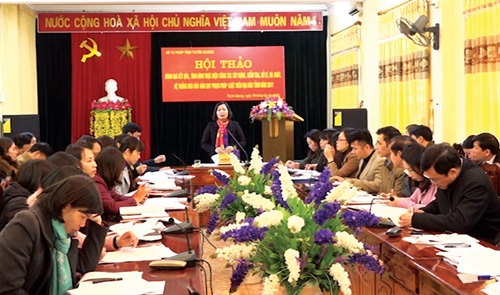The draft amended Labor Code is expected to be submitted to the National Assembly (NA) at its upcoming session this October. However, for the time being, opinions remain divergent on a number of issues such as shortening of working time and increase of the maximum overtime.
Is it the right time to reduce working hours?
The draft puts forth two options on revising the current Labor Code’s provisions on the standard working time.
The first option, devised by the Government, retains almost all current regulations, saying that the normal working time must not exceed eight hours a day and 48 hours a week, and in case of working on a weekly basis, the normal working time must not exceed 10 hours a day and 48 hours a week. The only amendment is the provision requiring employers to restrict the time of their employees’ working in exposure to dangerous or hazardous factors according to relevant technical regulations.
The second option, made at the proposal of the Vietnam General Confederation of Labor, recommends a significant amendment, reducing the standard working hours per week to 44 hours from 48 hours.
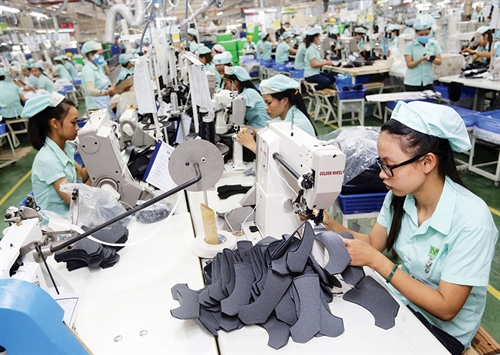 |
| Producing footwear for export at Midori Safety Footwear Vietnam Company Ltd. in Dien Nam-Dien Ngoc industrial park, Quang Nam province__Photo: VNA |
In a report on controversial issues relating to the revision of the Labor Code submitted to the NA Standing Committee, the NA’s Committee for Social Affairs cited inequality in regulations on normal working time between state employees and those regulated by industrial relations as the reason behind the proposal.
“In principle, it is necessary to encourage the reduction of normal working time per week in order to attain equality with the public administration sector as well as conformity with common trends in the world with the goals of boosting the application of measures to raise productivity, secure full employment, and enable the increase of overtime working hours in certain sectors and fields,” the report read.
The proposal immediately stirred up fear among the business cycle.
In his speech before the NA Standing Committee on August 14, President of the Vietnam Chamber of Commerce and Industry (VCCI) Vu Tien Loc said: “Our goal is to improve the life of workers but it must suit the current socio-economic conditions and situation of the country.”
“Vietnam is facing enormous challenges arising from developments in the world economic situation,” Loc said, warning that negative impacts of the ongoing US-China trade war on the country are much greater than expert forecasts. “It’s not the time to increase wage or reduce working hours. We should think about this only when our economy sees better growth in the future,” he stressed.
The VCCI head’s opinion is strongly supported by enterprises, especially those operating in labor intensive sectors such as textile-apparel and seafood processing.
Representatives of the Vietnam Textile and Apparel Association (VITAS) and the Vietnam Association of Seafood Exporters and Producers (VASEP) voiced their objection to the plan to cut the official working time. VITAS Secretary General Truong Van Cam was quoted by Vietnamnet as saying that he did not support the plan as this would lead to higher production cost and lower competitiveness of Vietnam’s products. Meanwhile, VASEP Secretary Truong Dinh Hoe warned that the plan may affect foreign direct investment attraction because this would make the labor cost in Vietnam higher than other countries, adding that only developed countries apply the regime of 40-44 hours of working per week.
If the weekly working time is reduced from 48 hours to 44 hours as proposed, the number of overtime hours will increase by four hours per week for which enterprises will have to make overtime pay equaling 150 percent, 200 percent or 300 percent of the wage level paid for normal working time. It is estimated that an enterprise with 2,000 workers will have to pay an additional amount of VND 5 billion (USD 217,000) per year.
Who will benefit from removal of overtime cap?
The Government’s proposal to expand the overtime cap from 300 hours to 400 hours per year for a number of trades and sectors is also a hot topic among policymakers.
Under the current Labor Code, an employee can work a maximum of 200 extra hours per year. In some specific areas like textiles and garments, leather, aquatic product processing, telecommunications, and water and power supply, overtime is capped at 300 hours per year.
However, reality tells a different story. Given the fact that many Vietnamese enterprises, especially those in industrial parks and export processing zones, earn the majority of their turnover from export orders, they seemingly have no choice but require laborers to work overtime to get the orders completed in time. Consequently, not a few of them break the law. Truong Thi Bich Hanh, a NA deputy from Binh Duong province, cited a report released in 2016 showing that businesses asking for overtime was common, with some even exceeding the permitted limit by two or three times. “Even if the law does not allow extra overtime, employers themselves would still ask their staff to work the extra hours,” Hanh was quoted by VnExpress as saying.
Hence, it comes as no surprise that the intention to remove the overtime cap is supported by employers.
VCCI head Loc cited overtime regulations of other countries to prove that the proposal is suitable to common trends in the region and the world. “The current maximum permissible overtime of Vietnamese laborers is relatively low, compared to regional countries,” he said, adding that Cambodia and the Philippines set no overtime cap while Malaysia, Singapore, Indonesia, and Laos respectively keep it at 104, 72, 56, and 45 hours per month, and Thailand, 36 hours per week.
According to Loc, many businesses had to refuse export orders, especially those with short delivery time, just because they have exceeded the overtime cap. “The proposal to increase the maximum overtime would help “untie” enterprises which depend on seasonal orders,” he said.
In fact, the raising of the overtime cap is a real need of not only employees but also employers who wish to work overtime to earn extra income.
However, top legislators seem to disagree with the proposal.
At the NA Standing Committee’s sitting on August 14, NA Vice Chairman Do Ba Ty said it is unnecessary to increase the overtime limit amid technological development and the improvement of workers’ skills.
According to NA Vice Chairman Uong Chu Luu, the Labor Code should stipulate trades and sectors in which the maximum overtime will be increased as well as the specific maximum overtime caps per month and per year. “The overtime limit should be increased, but not to 400 hours as suggested by the draft Labor Code,” he said.
Meanwhile, NA Chairwoman Nguyen Thi Kim Ngan pointed that the proposal results from enterprises’ requests to complete large seasonal orders without having to expand production scale or hire more employees.
“From my point of view, I do not agree [to raise the overtime cap]. I request [the Government] to thoroughly consider this issue,” she said.
“The Labor Code should protect and harmonize the interests and obligations of all stakeholders,” Ngan said, underlining the need to find out the answer to the question what benefits the amended regulations will bring to employees, employers, as well as the State, society and country.
“We should adhere to the principle that the more developed the country is, the more benefits both employees and employers are entitled to,” she stressed.- (VLLF)





